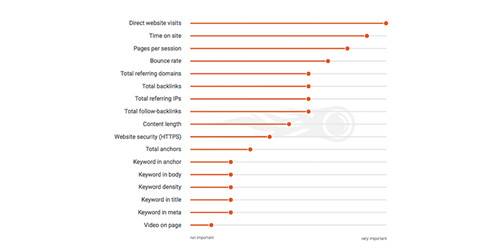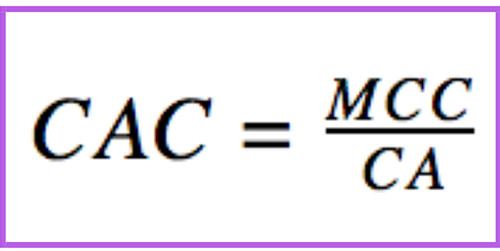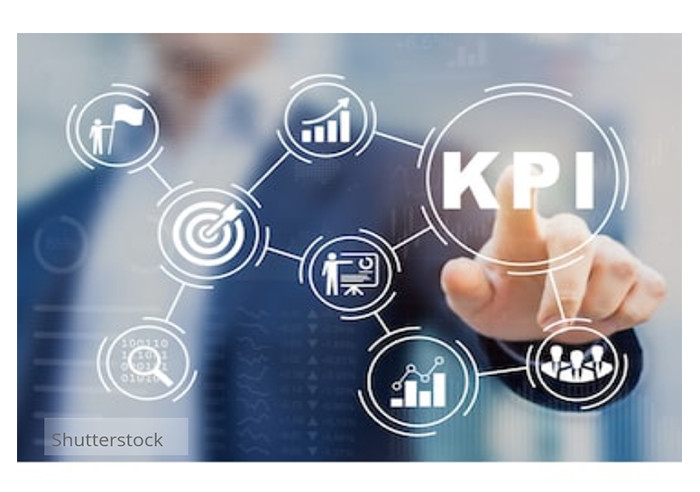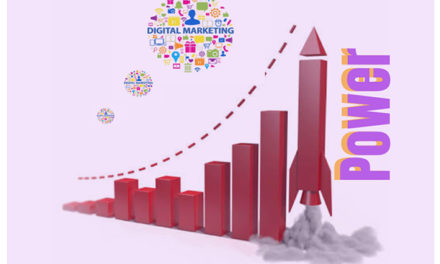If there is one thing you can never do without as a digital marketer, it is digital marketing KPIs.
It would mean madness in disguise if you keep going to work every day, getting on the internet, writing content, updating your blogs, social media pages, sending emails, etc without knowing what actually comes out from each activity.
A good marketer is one that knows how to measure his/her activity. Including matching activity with goals and objectives.
You can work all day without knowing whether you are going front or back when you don’t understand the idea behind key performance indicators (KPIs).
You haven’t done a good job if your focus is on the performance of digital marketing activities alone, knowing what shows that your efforts are not just in vain makes it good.
In this article, I will explain in detail what digital marketing Key performance indicators are, their importance and 35 KPIs you must never fail to consider if you truly want to succeed in the digital biz.
What Exactly are Digital Marketing Key Performance Indicators (KPIs)?
Digital Marketing KPIs are simply pointers to your daily, weekly, monthly, quarterly or annual performance.
They are used to explain the degree to which the successfulness of a particular objective can be measured or ascertain.
As the name implies, KPIs are like measurement rods used to measure the level of your performance over a specific activity.
Unlike metrics that are broad, KPIs are more specific in relation to your specific objectives.
Generally, it is believed that all KPIs are metrics, but not all metrics are KPIs. That’s because every business has their unique target. Hence, what seems to be a key pointer of success for Firm “A” may not necessarily be same with Firm “B.”
If you wish to know more about the difference between a KPI and metrics visit growth.com.
I think they did a good job.
I like the definition coming from KPI.Org:
Key Performance Indicators (KPIs) are the critical (key) indicators of progress toward an intended result. KPIs provides a focus for strategic and operational improvement, create an analytical basis for decision making and help focus attention on what matters most.
KPI.Org
Thomas Haynes at SmartInsight gave a piece of good advice on what KPIs is all about and how to go about it.
For Thomas, KPIs, and goals in general, need to be clearly understood by the parties concerned. Therefore, It must be SMART in nature.
The definition provided by Thomas will also help you understand what KPIs truly mean.
Digital Marketing KPIs or Key Performance Indicators are quantifiable goals which help you to track and measure success. KPIs are a useful way for Digital Marketers in setting expectations and prove that their work is having a positive impact.
What Are The Importance of Digital Marketing KPIs?
The essence of knowing your KPIs as a digital marketer cannot be overemphasized.
Just like the famous quote “What gets measured gets done.” Peter Drucker
Being able to measure your progress is an indication that you will definitely reach your target.
The truth is-What you can’t measure, you can’t pressure. This means, if you don’t know the level at which an activity is, you wouldn’t know whether to add more or subtract more.
For example, if you are a medical doctor, a Cardiologist that specialized in issues that border on heart and blood vessels, high blood pressure or abnormal heartbeat.
Then, a patient comes with a complaint of abnormal body hotness and headache.
If you quickly start administering drugs without a medical test, at least to measure the level of body temperature; most importantly, to know the volume of drugs to administer. Then, you are a wacky doctor.

Image credit: Depositphotos
Every professional Cardiologist must have one important measurement tool, and that is-“Thermometer.” A thermometer is a scientific tool that measures temperature — how hot or cold something is. Often, it is used to measure body temperature.
Well, am not a medical doctor, but am a content marketing doctor. So, am at liberty to buttress my point using medical cases.
As it is for medical doctors, so it is for digital marketers or online business owners.
The importance of digital marketing KPIs rise from the fact that, they tell you whether to stop or continue your marketing activity.
Some Specific Importance of Digital Marketing KPIs includes:
- They point you towards the right direction
- They open your eyes to see the do’s and don’ts
- They reveal the digital marketing channels that are active and inactive
- They indicate which marketing activity is bringing more returns on investment (ROI)
- They aid in matching performance with goals
- They minimize complexity in measuring performance
Before you continue reading to under the 35 digital marketing KPIs, I recommended you go through these guides below. They will aid you a lot:
Related: Simplest Guide To Power-up Your Digital Marketing Effectiveness
Related: 12 Proven Ways To Achieve Digital Marketing Efficiency
What Is the 35 Digital Marketing KPIs You Can’t Afford to Overlook?
Below are some of the KPIs you probably need to keep your eyes on as a digital marketer that wants to remain competitive in today’s business:
Website Traffic Source-Oriented
KPIs that are traffic source-related reveal where visitors to your website are coming from. A host of analytic tools like Google Analytics can aid you on that.
Some key areas of traffic source include that could serve as KPIs are:
1.Social traffic: This includes traffic gotten via social media posts. It reveals people who visited your site via clicking on your link in a social media platform.
2. Direct traffic: Visitors that came to your site by typing your URL into their browser, or through an unknown medium.
3. Referral traffic: People who visited your site by clicking on a URL on another website.
4. Organic Search traffic: People who found and clicked your website via performing a search for a keyword in a search engine (Google, Bing, Yahoo, Yandex etc.).
5. Paid traffic: People who visited your website through a paid form of ad or campaign. Eg. emails, AdWords, native ads, etc.
Social Media Engagement-Oriented
Using social media engagement as a digital marketing KPI entails focusing on how your target audience is reacting to your contents or post in social media networks.
No doubt, social media platforms have become a compulsory tool for online businesses today.
There are some key indicators that reveal your level of engagement on social media platforms. Eg. shares, likes, the volume of followers etc.
Funny enough, some marketers would call them vanity metrics – what does not matter.
Well, I guess I have said it earlier in this article that a KPI could vary from firm to firm. That means the digital marketing KPIs a particular firm is focusing on may not be same with another at a point in time.
For example, while the firm “A” calls comments and shares vanity metrics, firm “B” could see it as a vital aspect to monitor the engagement of more people and enhance brand awareness.
So, some specific indicators to look out for include:
7. Active Followers
Active followers are those who are faithful following your business social media page (s). In fact, they are those that consistently perform functions like shares, comments, etc.
Those who are seriously following up the activities on your page are very important because they can easily be converted into paying customers.
There are lots of social media management tools that can help you monitor and measure your social brand interactions such
7. Comments
Comments here I mean are reasonable comments
Wow! That’s a sign that people are actually engaging with your contents
8. Likes
More likes are clear indicators that could mean that people have regard over your contents. Imagine making a wonderful post without a single blink of the like.
Does that actually tell that your social media posts are reaching out to people it was supposed to? It doesn’t.
9. Shares
The number of shares is another key pointers of your social media engagements.
You can easily gain more brand awareness with more shares. That’s because as your content keep moving, lots of eyes will keep seeing it.
10. Mentions
These include tags or including your brand name on a post that you may not really know about.
Social media name-mentioning is an indication that people are talking about you even when you are not present.
11. Page Visits
Page visitors are like those checking on you inside your room to get more information about you. It could also be referred to as profile visit and could signify a followers intention to buy as he/she covers around for more details.
12. Link Clicks
Link clicks indicate that people are actually checking out your offers. In fact, those who clicked your links are best utilized in retarget marketing.
Those who clinked your link are likely having interest than those who liked. They have actually crossed the boundary and can be profitable if retargeted
Search Engine Optimization- Oriented
The KPIs here measures the performance of your efforts to gain organic ranking in search results.
A First Ranking Factors Research conducted by SEMrush in June 2017, based on the scope of 600,000+ keywords revealed a good number of SEO indicators.

Here are some specific digital marketing KPIs you also need to focus on in terms of SEO:
13. Crawl rate
Crawl rate measures the percentage at which the search engine bot goes through your web contents for indexing.
14. Keyword ranking
This measures where your specific keywords are positioned in search engine result pages from. The higher, the better.
15 Page Load Time
The speed of your website is crucial digital marketing KPI. It measures the number of time it takes your web page to open and load for the visitor to open or hover.
16. Bounce rate
Bounce rate measures the percent of sessions that your visitor loads the page and immediately exits without carrying out any significant action.
It can be calculated by dividing the number of non-interactive sessions by the total number of sessions.
17. Time spent
This measures the number of times a visitor spent on your website generally.
18. Page/Session
This measures an average number of pages users visit during a session. Often the repeated views of a single page are counted as well.
19. Exit Pages
This reveals how many visitors click and view through your web content till the end or before it till they existed. It shows whether your visitor completed his intended task or not.
20. Link Building
This shows how many websites referenced your URL or website address on their sites or other undefined media. Building links are among the essential aspect of digital marketing KPIs as they also determine the authority of every website.
Lead Generation and Conversion-Oriented
Lead generation is among digital marketing metrics that can never be overlooked. Leads are potential customers; the more you get leads, the higher it becomes possible to make sales.
Even though it could be broad, your job is to break it down into its KPI. But before that, you need to understand your leads in different segments. Such
21. Marketing Qualified Leads (MQLs)
MQLs are people who have moved a deep step ahead of others either by downloading an eBook or white paper.
They have positioned to be more willing and sales-ready than others in your custody who have not really moved further into your sales funnel.
22. Sales Qualified Lead (SQL)
The SQLs are leads that are more matured and have proven to be more ready to buy as identified by your sales team.
They have been verified by the sales team as worthy for follow-ups.
Keen attention needs to be paid to these segments of leads to avoid waste and improve the effectiveness of your marketing efforts.
23. Conversion Rates
Generally, conversion implies moving a client from one point to the desired point. That’s causing a customer or a visitor to take the desired action.
Nevertheless, conversions may mean different things depending on the campaign and the company involved.
For example, they could be:
- Actual Sales
- Subscription
- Download etc.
- Phone Call
It’s important to understand the cost and rate at which any of these may occur. One way to achieve that is by measuring the cost per conversion and conversion rate.
24. Cost Per Conversion (CPC)
This enables you to know how much money you spent on a certain campaign, and average conversions you got for that money spent.
It is sometimes referred to as cost per action (CPA).
CPC= Cost of traffic generation /Conversion
For example, your expenses for an advert campaign is $1000 and you got only 20 downloads, calls or sign ups etc.
CPC= 1000/20= 50
Your CPC will be $50 per sign-ups, calls, downloads, sales, etc as the case may be.
25. Conversion Rate
This reveals to you the percentage or degree at which your target audience hits your call to action.
To know your conversion rate, you need to know the value of its variables, such as – how many people your ad campaign reached, and also how many conversions you gained.
It can be calculated thus:
Conversion Rate= Number of conversion/ number of reach or session.
For example, if you ran an ad campaign in a month and it reached 2000 people with 600 conversions. Your conversion rate = 600/2000×100= 30%
26. Click Through Rate (CTR)
This provides the percentage of the total clicks in relation to the number of times an ad was shown to the target audience.
CTR reveals the performance of any CTA (Call To Action). It tells you how many people are clicking your CTA on any landing page, ad creative or email, etc.
It can be calculated by dividing the total number of clicks an ad gets by the total number of impressions; and then multiplying that by 100.
For example, where 1,500 people viewed an ad campaign and you got 200 clicks.
CTR = Number of clicks (200) / Viewers (1500) X 100=13.3%
Email Marketing Conversions
28. Email Subscribers
Subscribers are a total number of emails you have on your list. These are emails from people who signed up either to download, join your newsletter or any other type of opt-ins.
29. Email Unsubscribers
Email unsubscribers are opposites of subscribers. They are the total number of people that opted-out from your mail list. So they can’t receive your daily or periodic emails sent.
30. Email Forwarding Rate
This is the percentage of email recipients who shared or forwarded your email to another recipient.
It can be calculated thus:
A number of clicks on a share or forward button / Number of total delivered emails X100.
For example: where you sent 10000 emails and got 100 clicks on a share or forward button.
Email forward rate = 100/10000 X 100
Your email forward rate will be 1%.
31. Email Bounce Rate
This measures the percentage of your total emails sent that could not be successfully delivered to the recipient’s inbox.
Possible kinds of email bounce include soft bounce (caused by temporal network error) and hard bounce (caused invalid email).
Email bounce rate can be calculated thus:
Total number of bounced emails ÷ Number of emails sent) X 100
For example, you sent 12000 emails and 60 bounced. Your email bounce rate will be:
60/12000 X 100= 0.5%
Others Digital Marketing KPIs
32. Customer Acquisition Cost (CAC)
The CAC is an indicator that reveals to you how much it costs you to get a new customer in your business.
A savvy-digital marketer makes sure he/she spends less to get more customers otherwise one may be tending towards loss.
CAC can be calculated thus:

Where:
CAC= Cost of acquisition
MCC= Total Marketing Campaign Cost
CA= Clients or Customer Acquired
For example, If you invested $5000 in digital marketing in 5 months and generated 80 clients at that same time:
CAC= 5000/800 = $6.3
It is usually business-wise to spend more on clients whose lifetime value is bigger than the cost of acquiring them. That way, you can recover your investments back.
33. Customer LifeTime Value (CLTV)
CLTV is the estimated revenue that a customer will generate during his/her lifetime as a customer to a particular company.
Customers who are satisfied are known to be repeat buyers, which is also included in the calculation of the company’s total revenue generated from such customers throughout the customer’s lifespan.
To calculate your CLTV, you need to calculate the average order value which is done by taking the total revenue and divide it by the total number of orders.
CLTV can be calculated thus:
(Average order value) X (Number of Repeat Transactions) X (Average customer lifespan in months/years)
34. Return on Investment (ROI)
A return on investment is the essence of investing in online advertising or digital marketing strategies.
As part of the digital marketing KPIs, it tells you how well your strategy is performing in terms of income, capital investment and cost.
ROI can be calculated thus:
(Income generated – investment costs) / investment costs x 100
A positive result shows that your investment is actually yielding profitable rewards while negative implies you are running in loss.
For example.
If you invested $800 in your digital marketing activities and got $1000 as income, your ROI will be:
(1000 – 800) / 800 X 100 = 25%
ROI = 25%
35. Attrition/Churn Rate
This shows the percentage of people who no longer buy your products or services.
It’s a KPI to measure the loyalty level of customers. As a digital marketer, you can also use it to measure how many people unfollowed your business page.
Often times, increased churn rate may be an indicator of poor user experience or slow service delivery.
With the aid of a CRM tool, you can monitor how many clients have stopped paying for your services or ordering your products at a monthly, quarterly or annual internal.
Final Note
No doubt, you need a close eye on your digital marketing Key performance indicators to win today’s marketing race. Your KPIs are what will tell whether you are getting it right or not.
But hey! Don’t get tempted to target too many things at the same time. Else, you will end up having little or nothing to show.
Now you already know over 35 digital marketing KPIs to look out for. Of course, that’s not all but make sure anyone you choose aligns with your goals and objectives.
Did I miss out the one you feel is also important? Drop your thoughts in the comment box below. I’ ll be super happy to hear from you.

Jackson is an obsessed content marketing specialist. A brand storyteller, not a teller of stories. He is passionate about helping online businesses grow with compelling digital marketing strategies. Follow him on Twitter, LinkedIn, and Instagram.





